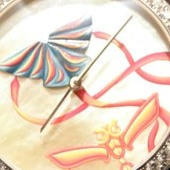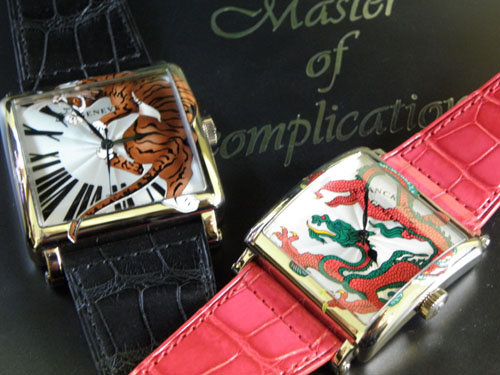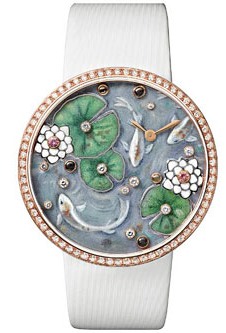There are a host of mediums that top-tier watch brands use to achieve art for the wrist, and those venues are constantly evolving and taking on new shape and form, often with a blend of several coming together in one timepiece. Among the most favored mode today – for painting flowers, animals and even scenes on watches — is enamel work.
Enamel work dates back centuries upon centuries and is one of the most time-honored traditions — requiring a skilled and steady hand, a deep knowledge of the colors and the firing processes, and an enormous amount of patience. Essentially, enamel is a soft crushed glass composed of certain elements that, when mixed with
 other elements, is capable of creating intense hues and alluring depth. Colors are created by crushing the stones into a powdery substance and mixing them with different elements such as iron (to achieve yellow, green and brown hues), chromium (green tones), iodine (fiery reds), copper (hues of blue, green and red) and manganese (black and violets). Each enameller mixes his or her own colors with oil to achieve the perfect consistency for painting, and then paints with a single-hair brush using microscopes and loupes.
other elements, is capable of creating intense hues and alluring depth. Colors are created by crushing the stones into a powdery substance and mixing them with different elements such as iron (to achieve yellow, green and brown hues), chromium (green tones), iodine (fiery reds), copper (hues of blue, green and red) and manganese (black and violets). Each enameller mixes his or her own colors with oil to achieve the perfect consistency for painting, and then paints with a single-hair brush using microscopes and loupes.
 Every enamel watch dial undergoes multiple paintings and, hence, multiple firings in a kiln at a temperature of well over 1,400 degrees Fahrenheit–where the extreme heat subjects it to the possibility of paint bubbles, cracks, dust or even breakage, all of which would render the dial useless, forcing the enameller to start again. To achieve a depth of color or translucency, a dial can require dozens of paintings and with every single painting comes another firing before proceeding to the next step – subjecting it to dangers again and again. Because every single watch dial is hand painted, each is unique – and all are rare.
Every enamel watch dial undergoes multiple paintings and, hence, multiple firings in a kiln at a temperature of well over 1,400 degrees Fahrenheit–where the extreme heat subjects it to the possibility of paint bubbles, cracks, dust or even breakage, all of which would render the dial useless, forcing the enameller to start again. To achieve a depth of color or translucency, a dial can require dozens of paintings and with every single painting comes another firing before proceeding to the next step – subjecting it to dangers again and again. Because every single watch dial is hand painted, each is unique – and all are rare.
Among the different styles of enameling: grand feu (freehand painting), cloisonné (with strips of gold outlining the design), champlevé (wherein engraving or cutouts are made into the metal first and then the area is filled with enamel), flinque (translucent paints on an engine turned dial) and spangle (with gold foil decorations sunken in to the enamel). In each of these enameling techniques, the artist creates or develops his or her own style — crafting from mind’s eye to watch dial with passion and patience. Seen here are just a few enamel masterpieces unveiled recently in Geneva.








